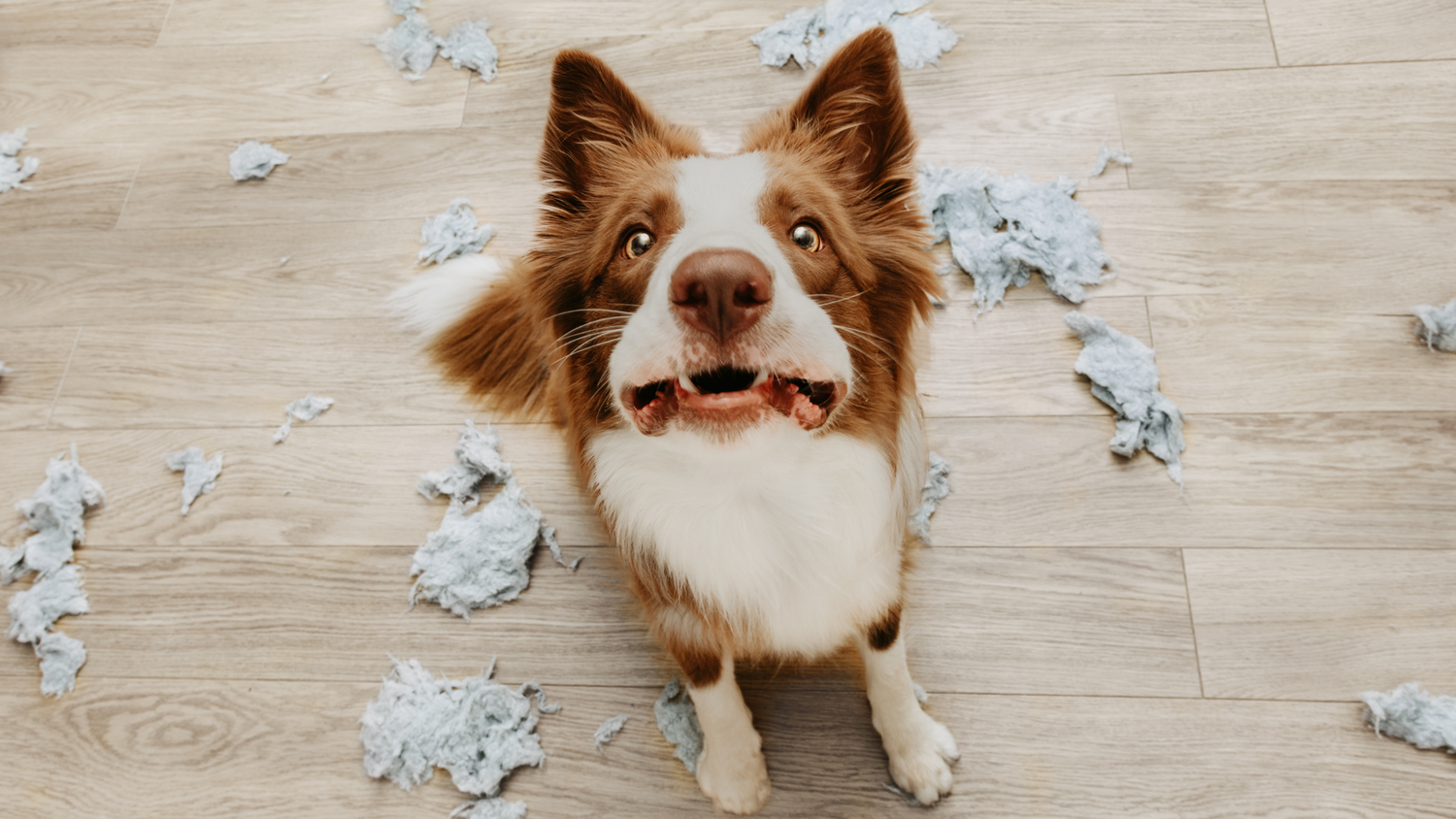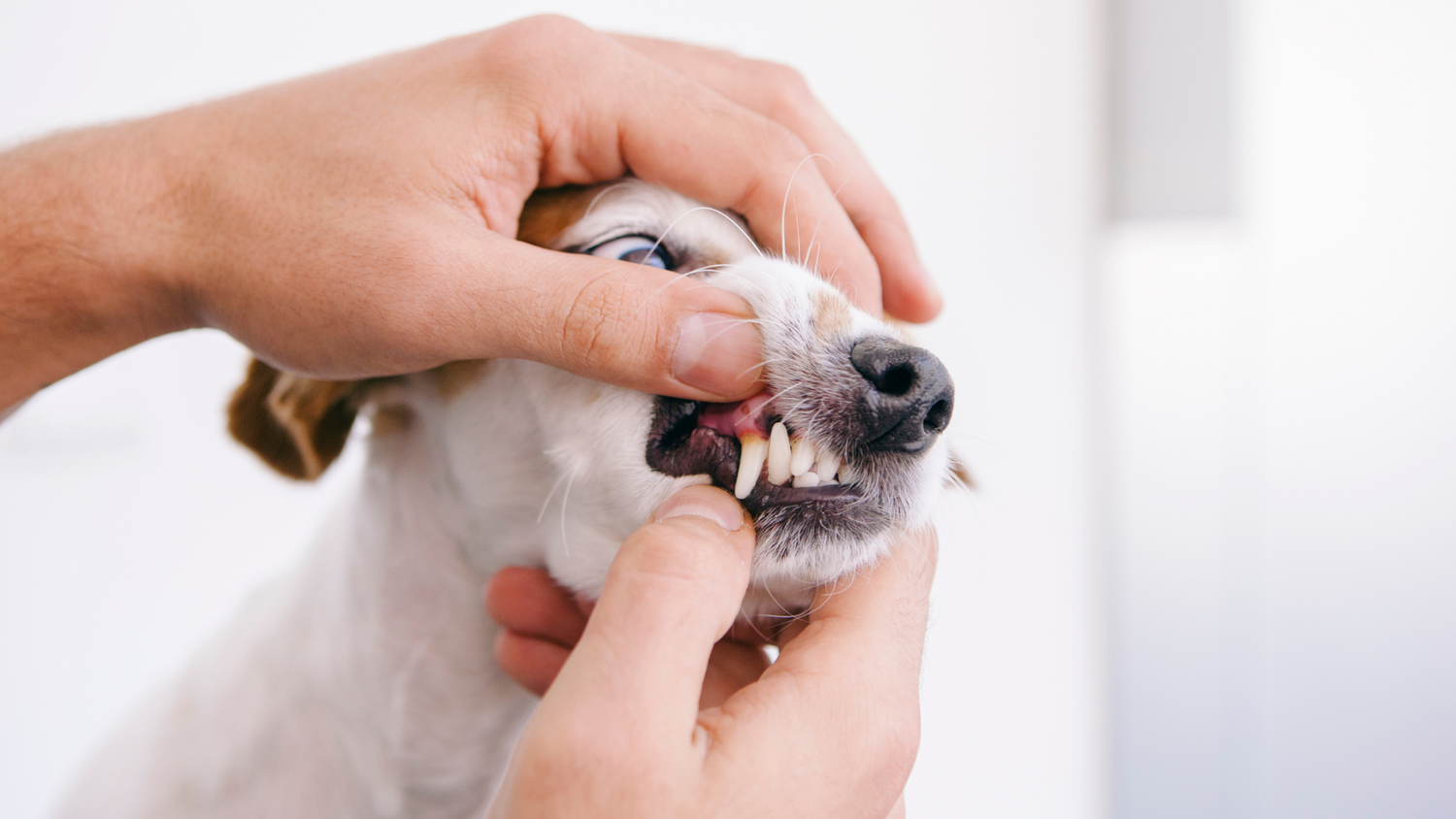Did you know over 80% of dogs over the age of three have active dental disease?
Dental disease in dogs can appear out of nowhere, and remain undetected for a long time. One day they seem completely fine with no obvious signs and symptoms, then the next, your dog is experiencing chronic pain, eroded gums, missing teeth, and bone loss - a fate hardly fair to a man’s best friend.
Dental disease is highly common in dogs, and because they tend to have a more alkaline mouth than humans, there’s a higher chance of plaque formation. Fortunately, there are things you can do to prevent gum disease in dogs. In dogs, tooth decay is uncommon, representing less than 10% of all dental problems. The most common canine dental problems are periodontal disease and fractured teeth.
What is periodontal disease?
Periodontal disease is essentially an inflammation of the teeth and gums caused by a build-up of plaque. Periodontal diseases begin with gingivitis and left untreated, the infection often spreads deeper into the tooth socket, destroying the bone. Ultimately, the tooth becomes loose and may fall out over time.
Symptoms of periodontal disease
Unfortunately, it is common for dogs to not show any symptoms at the early stages of gum diseases. Once they start to show symptoms, the disease is usually very advanced. By then, your dog may be experiencing chronic pain, which animals instinctively hide to avoid showing weakness.
Symptoms of severe gum disease include:
- Difficulty picking up food and chewing
- Bleeding, inflamed, and withdrawn gums
- Loose or missing teeth
- Bad breath
- Sensitivity around the mouth
- Lose of appetite and/or weight
- Pawing at the mouth or face
- Blood in the water bowl or on chew toys
- “Talking” or making noises when a dog eats or yawns
- Bumps or lumps in the mouth
- Bloody or ropey saliva
- Not wanting the head touch (head shyness)
- Chewing on one side of the mouth
- Sneezing or nasal discharge - advanced gum disease can destroy the bone between the nasal and oral cavity
Prevention
These four steps are key to preventing or slowing down painful gum disease in dogs.
Regular vet visits
Make sure to take your dog in for regular oral exams and cleanings. Dental x-rays done under general anesthesia are the only way to get the full picture of what’s happening in your dog’s teeth and below the gum line.
Brush their teeth
One of the best ways to prevent periodontal disease is to brush your dog’s teeth daily, or at least multiple times a week. Dogs are never too young to have their teeth brushed; in fact, the younger they start the better! While the task may seem daunting, it doesn’t have to be. Be patient, have the right tools ready, and get some advice from your veterinarian, and you’ll be good to go. As a matter of fact, most dogs, even senior pets, will allow you to brush their teeth.
What you need:
- A specially-made dog toothbrush or toddler toothbrush if you have a small dog - electric toothbrushes are great as they are quick and easy, however, your dog may be frightened by the sound
- Pet toothpastes are available in flavours like chicken and beef - do not use human toothpaste for your dog as it can upset their stomach
- Treats to reward your dog - we recommend Novel Protein Treats!
How to brush your dog’s teeth:
- Start by allowing your dog time to become familiar with the toothbrush and toothpaste. Put them out and let your dog have a sniff, and taste the toothpaste. Also, get your dog used to you touching their mouth. Gently rub their teeth and gums with your finger.
- When your dog is comfortable with you touching their mouth and is familiar with the toothpaste and toothbrush, gradually switch to putting the toothpaste on your finger, and then to putting the toothpaste on a toothbrush. First, let your dog lick the toothpaste off your finger. If it’s too difficult to brush their teeth with a toothbrush, you can use a small washcloth instead.
- You only need to brush the outside of your dog’s teeth - the side facing the cheek. Only do as much at a time as your dog allows, and work quickly.
- If you notice any issues as you brush, like bleeding gums or bad breath, visit your veterinarian. The earlier problems are found, the easier they are to treat.
- Toothbrushing should be a bonding experience for you and your pup! So it’s important this is constantly reinforced with praise and rewards immediately after each session. Also, be patient with your dog! Toothbrushing can be a strange and uncomfortable experience for some dogs, and they may need weeks to accept it.
Alternatives to teeth brushing
If you struggle to brush your dog’s teeth, there are alternative ways to care for their teeth and gums. There are a number of options in the market including:
- Dog teeth cleaning wipes
- Bones
- Dental treats
- Chew toys
- Food supplements - there are some dog supplements that soften and remove plaque
- Sprays and gels
- Coconut oil
- Water additives
- Healthy fruits and vegetables - carrots, watermelon, or some sweet potato treats
- Veterinary dental treatments
Ask your veterinarian for advice on what is best for your furry pal.
What should I do if I suspect my pet has dental disease?
If you notice any of the symptoms mentioned above, take your dog to the vet ASAP for a proper diagnosis. It’s important to start any necessary treatment immediately before any irreversible damage occurs.





